Go to United Kingdom birding tours | Norfolk Birding day tours | European trip reports | All our birding tours
DOWNLOAD TRIP REPORT
27 MAY 2021
By Chris Lotz
During this Norfolk birding day tour, we spent most of our time at the famous RSPB Titchwell Marsh Reserve in north-western Norfolk, then enjoyed a bit of time at the North Point Pools/Warham Freshmarsh just east of Wells-next-the-Sea. A total of 65 species were recorded for the day, 61 species at Titchwell, and 38 species (only a handful of them new for the day, but including some star birds such as Lesser Whitethroats) at North Point. E-bird lists and maps of where we walked, for both sites visited, are linked to here: Titchwell and North Point Pools. You can download the e-bird app here; by e-birding your birdwatching sessions you contribute to citizen science and potentially bird conservation. Other apps I mentioned during the day are Birdguides and the Collins bird guide.
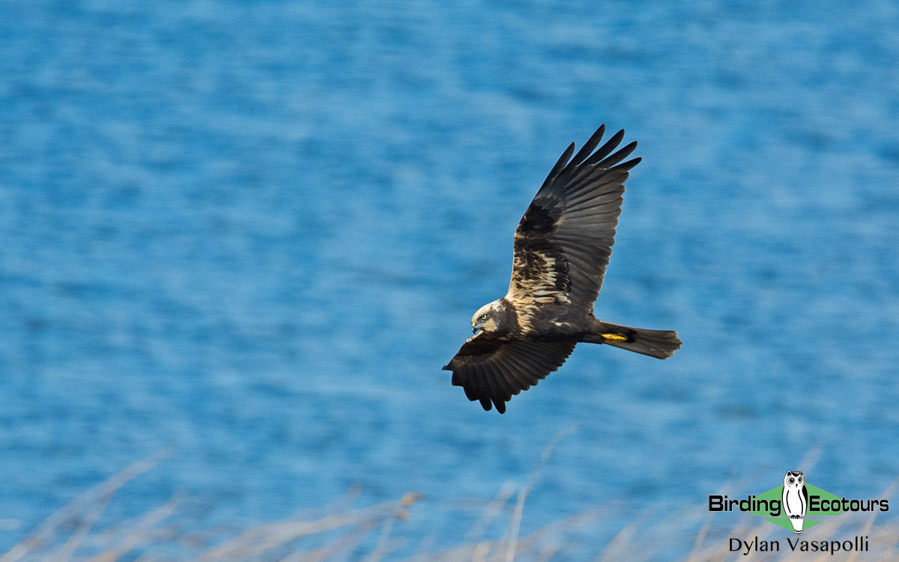
One of the highlights of the day included a pair of Bearded Reedlings (Tits) although after what must have been an hour of watching, we only had one or two brief perched views, all the others being flight views, often as either the male or the female dove down into the reeds, always at exactly the same place; there was clearly a hidden nest that this pair kept returning to.
I was pleased that the LBJs (Little Brown Jobs, or “sparrow-like birds”) in general showed very well so we could get acquainted with the relatively subtle differences between all of them. We started the day with close-up Common (Greater) Whitethroats and ended the day with a bush full of rather co-operative Lesser Whitethroats. These species, along with all the other warblers, were displaying and singing like crazy today; spring birding in England is great.
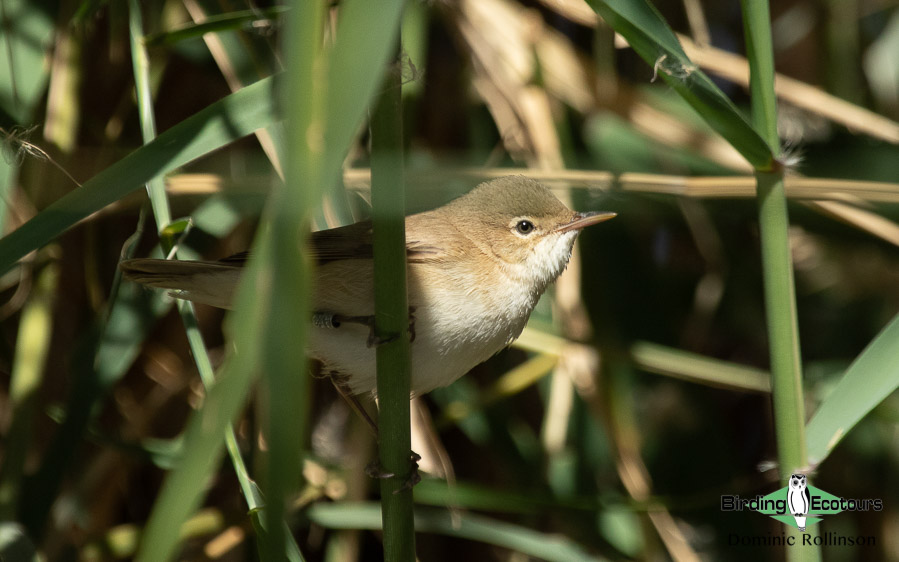
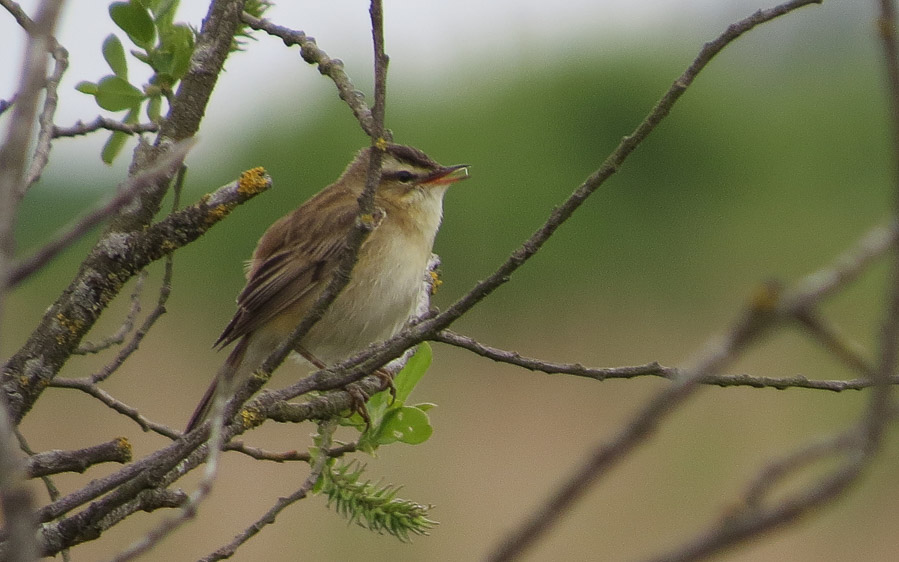
Detailed Report
I met Suzanne and David at 8 am at the RSPB Titchwell Marsh reserve entrance. We started with the East Trail walk to Patsy’s Reedbed. There was no sign of European Turtle Doves which I’d seen a few days earlier, but not to worry as David and Suzanne had seen a couple of these very well in the nearby Brancaster area. A Common Cuckoo and a booming Eurasian Bittern were very vocal, as were a plethora of warblers, their sounds being more easily identifiable than their appearances. An extremely loud Cetti’s Warbler right next to us remained invisible, but we weren’t too concerned as again Suzanne and David had seen and photographed this bird very well previously. Nearby, a Common (Greater) Whitethroat gave excellent views and allowed me to point out all the features, not only the obvious white throat but also the reddish wings, song and display, for comparison with the Lesser Whitethroats which we saw later at the North Point Pools. A Eurasian Reed Warbler also gave excellent views, to be compared a little later with some close-up Sedge Warblers with their obvious eyebrows and different songs, while we were patiently waiting and attempting to get decent views of Bearded Reedlings.
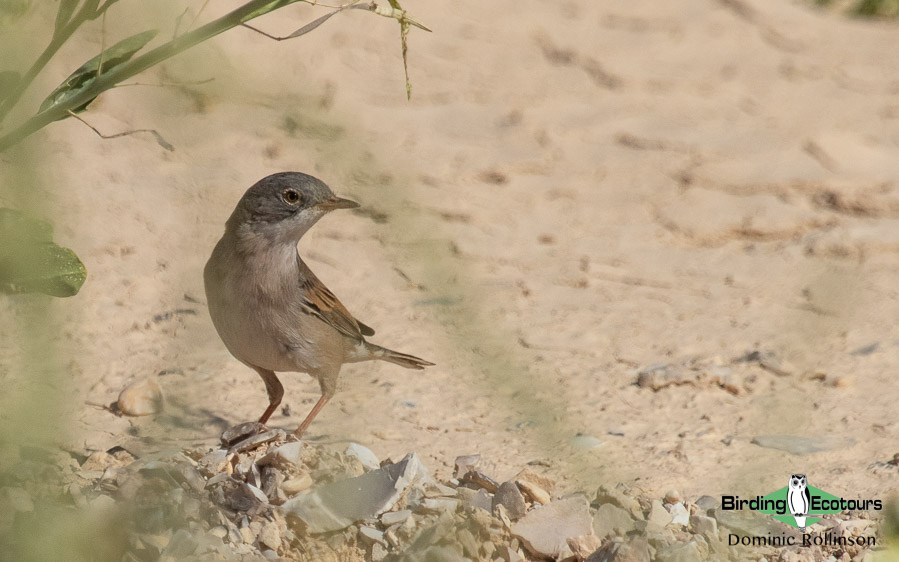
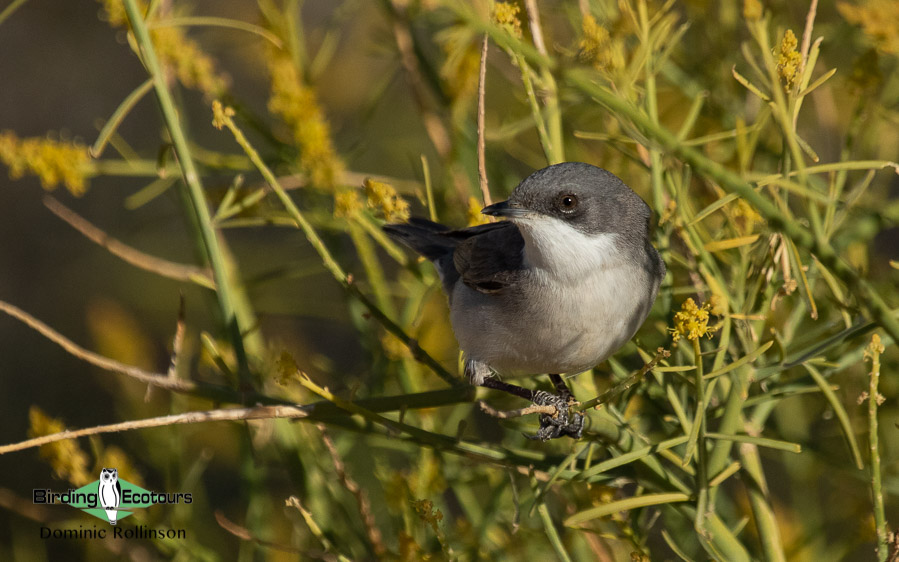
Strikingly marked Common Reed Buntings were much in evidence, as were numerous Western Marsh Harriers quartering low over the extensive reedbeds in search of prey (and one sitting in the reedbed, too). Many Common Swifts were also around here, and throughout the reserve, winging their ways low over the reedbeds. A Spotted Flycatcher was a FOY (First of Year) bird for me; these do tend to be a bit thin on the ground. A fellow birder kindly alerted us to the presence of this little brown bird.
We enjoyed getting acquainted with some of the wildfowl such as Common Pochard, Gadwall, Tufted Duck, Common Shelduck and as always Mallard. Later, on our walk to the Titchwell Beach, we enjoyed seeing a handful of Brant (Dark-bellied) Geese among the all-too-common Greylag Geese and feral Canada Geese (not David’s favorite birds!). A completely stationary Grey Heron (seemingly a statue) amused us, as did a couple of Little Egrets. Two Mediterranean Gulls, with their characteristic flight calls, flew right over us but then immediately started flying into the sun so never gave proper views. It would have been nice to have seen these better, for comparison with the much more numerous Black-headed Gulls with their less pleasant piercing calls.
After spending some good time along the eastern trail here at Titchwell, we then did the main trail from the visitor center to the dunes/beach, past the fresh marsh and all the other classic sites that abound with bird species and make this reserve famous. We spent a lot of time at the beginning stretch of this trail trying to get good views of the Bearded Reedlings (seeing a good number of other species while patiently waiting, one of the highlights being a fast-flying, sleek Eurasian Hobby).
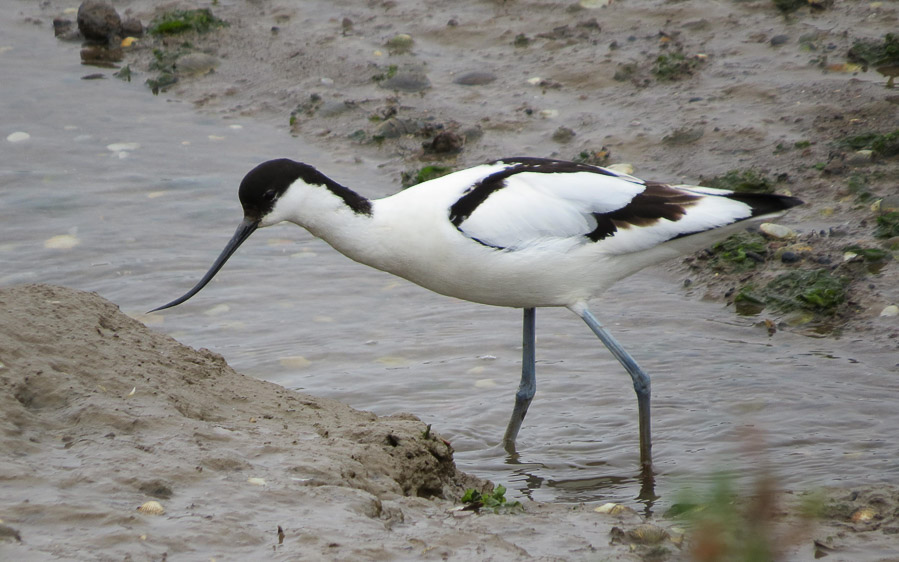
Further along the trail and at the south Parrinder Hide, we really enjoyed comparing Little Ringed Plovers and Common Ringed Plovers and seeing strikingly marked Ruddy Turnstones, several Common Redshanks, good numbers of delicate, beautiful Pied Avocets and a roosting Sandwich Tern with its yellow bill tip. One of the highlights was a pair of Eurasian Spoonbills that flew over, perhaps from the nearby Holkham National Nature Reserve breeding colony.
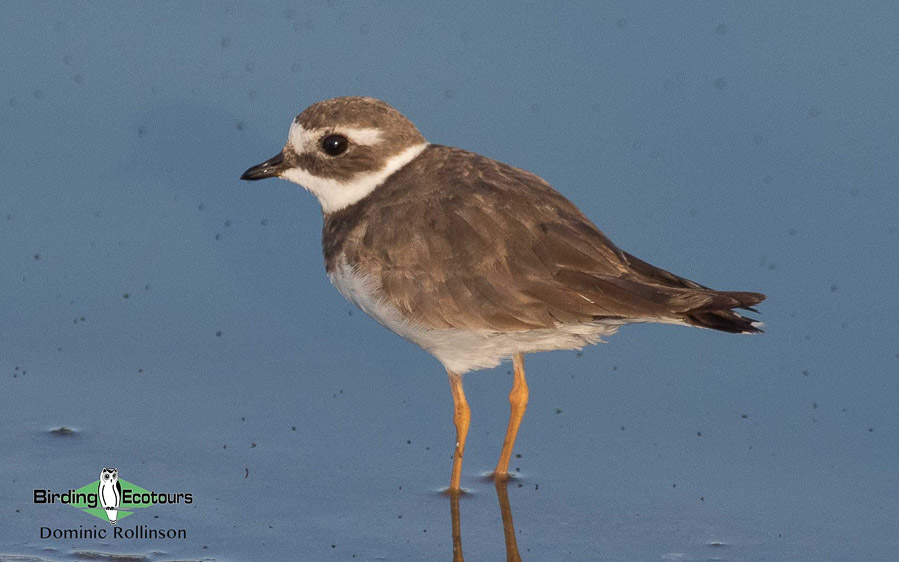
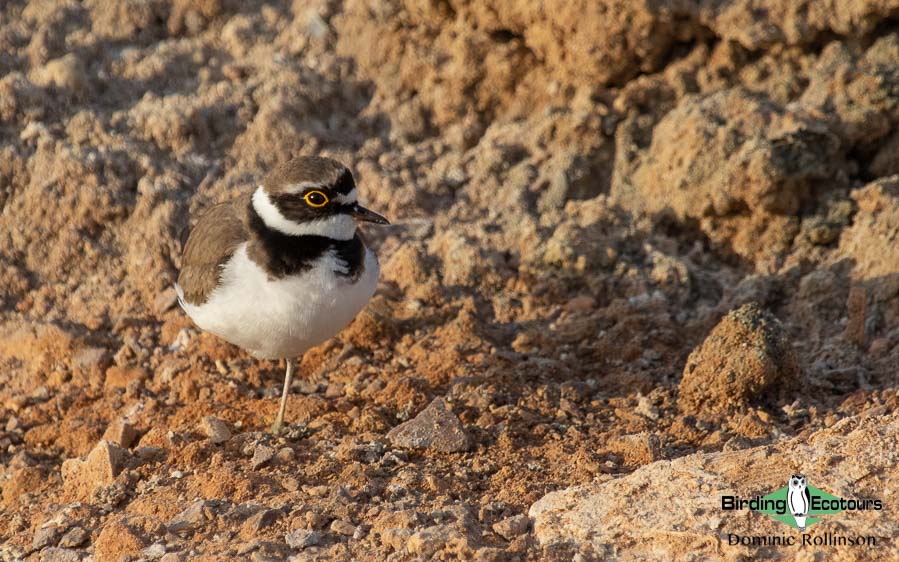
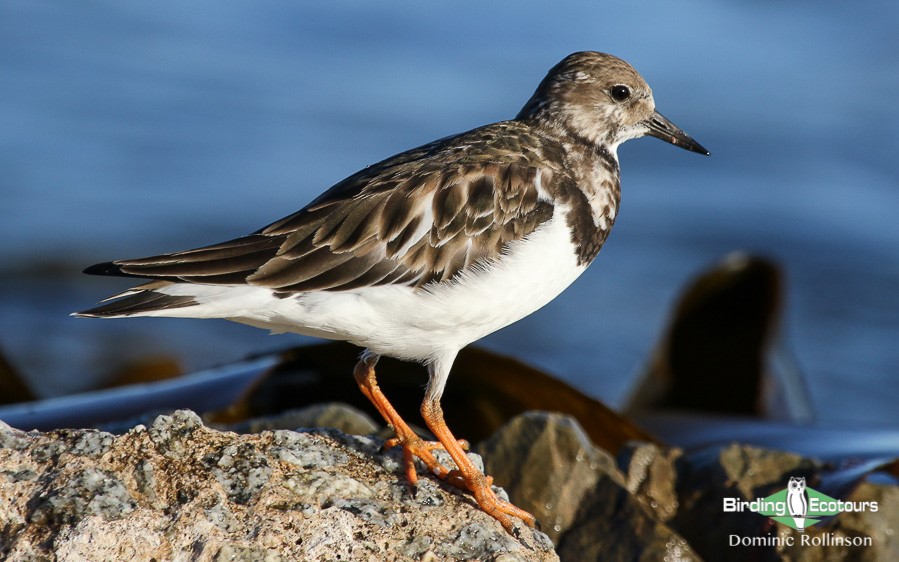
We eventually made it to the dunes so we could look down onto Titchwell’s extensive beach. Looking west from here is Thornham Harbor and the Holme Bird Observatory and looking east is a good view of the picturesque Brancaster Beach which is accessible from here at low tide. As usual, there were large numbers of Eurasian Oystercatchers and other species here on the beach. On the walk back, Common Linnets tantalized us with flybys but we had to wait for our next site to see this species well.
We enjoyed a pleasant picnic lunch before leaving Titchwell to drive east along the beautiful North Norfolk coast. We stopped briefly to enjoy the wide vista encompassing the Burnham Overy Dunes in the distance across extensive, bird-filled marshes, and Holkham Pines starting on the eastern end of the dunes. These are exciting places for birding, but we didn’t have time today. Granted, arguably the best time for birding this area is in late summer and autumn when Barred Warbler, Bluethroat, Yellow-browed Warbler and many other scarce British birds, often pitch up. Anyway, we had limited time left for today’s trip, so after ten minutes here we continued eastwards to allow adequate time to bird our second and final major site for the day, the North Point Pools (Warham Freshmarsh).
North Point Pools did not disappoint. The first part of the trail was, as always, good for relatively close-up waterbirds. A vocal Common Cuckoo flew right over our heads. Common Linnets co-operated better here than at Titchwell, with us being able to scope perched birds.
We then entered the next habitat, a “savannah-type” area, which contained many Lesser Whitethroats. These birds sound and look a bit like mini Layard’s Tit-babblers (Warblers) from my home South Africa; they’re easy to pick up in suitable habitat in Norfolk in spring and early summer if their rattling song is known.
Here at North Point, we also enjoyed a beautiful Red Kite, and talked about how this species has spread across many parts of England over the last two decades. We also watched a pair of Common Buzzards, along with a few more male and female Western Marsh Harriers (a common bird in Norfolk, thanks to all the wetlands and reserves).
At around 4.30 pm, we walked up onto the bank at the end of the savannah type area, from where we enjoyed a fabulous view over the extensive coastal marsh area (the third major habitat of this great birding hotspot), and across to Wells-next-the-Sea. After about 15 minutes here, we decided to call it a day; time for ice creams! What a wonderful day this was, enjoying some of Norfolk’s amazing birds and reserves, with great company. It was truly great spending the day birding with David and Suzanne!
Please see the downloadable PDF above with the full species lists included.